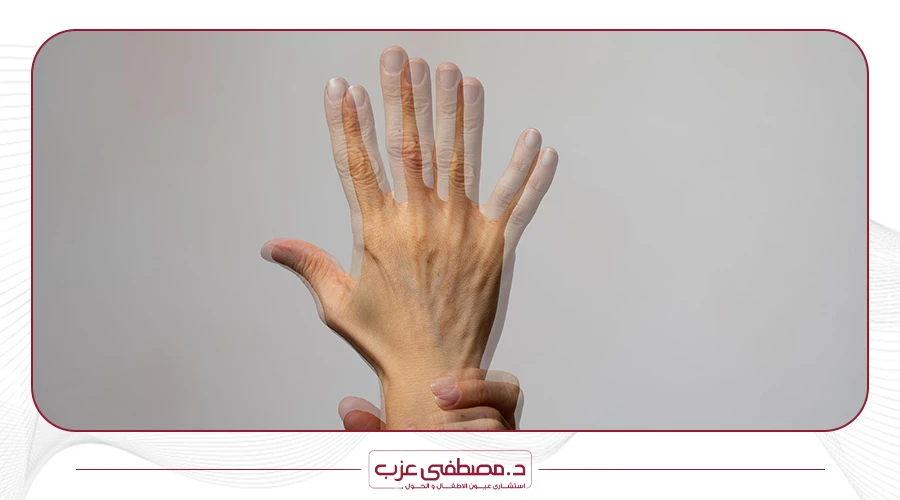

Diplopia, commonly known as double vision, is a visual phenomenon characterized by the
perception of two images of a single object. This condition can significantly impact an
individual’s quality of life and may be a symptom of underlying eye or neurological
disorders. In this article, we will explore the causes, symptoms, diagnosis, and treatment
options for diplopia to provide a comprehensive understanding of this visual impairment.
Causes of Diplopia:
Diplopia can result from various underlying causes, including:
1. **Muscle Weakness or Imbalance:** Dysfunction of the muscles that control eye
movement can lead to misalignment of the eyes, causing double vision. Conditions
such as strabismus (ocular misalignment) or nerve palsy (weakness of eye muscles)
can contribute to muscle-related diplopia.
2. **Refractive Errors:** Uncorrected refractive errors such as astigmatism, myopia, or
hyperopia can cause blurred or double vision, especially when looking at objects at
specific distances.
3. **Neurological Disorders:** Conditions affecting the brain or nerves responsible for
controlling eye movements can result in diplopia. These may include stroke,
multiple sclerosis, brain tumors, or head trauma.
4. **Eye Conditions:** Certain eye diseases or injuries, such as cataracts, corneal
irregularities, or retinal disorders, can cause diplopia by affecting the visual input
received by the brain.
5. **Systemic Diseases:** Systemic health conditions such as diabetes, thyroid
disorders, or myasthenia gravis can indirectly affect eye function and lead to double
vision.
Symptoms of Diplopia:
The primary symptom of diplopia is the perception of two images of a single object, which
may appear side by side, overlapping, or vertically displaced. Other accompanying
symptoms may include:
1. **Eye Strain:** Individuals with diplopia may experience eye strain or discomfort
when attempting to focus their eyes on objects.
2. **Headache:** Persistent double vision can sometimes lead to headaches,
especially if the eyes are constantly straining to align images.
3. **Difficulty with Balance and Coordination:** In some cases, diplopia accompanied
by neurological conditions may affect balance and coordination, leading to
unsteadiness or difficulty walking.
4. **Squinting or Closing One Eye:** To alleviate double vision, individuals may
instinctively squint or close one eye, which temporarily eliminates one of the
images.
5. **Worsening with Specific Gaze Directions:** Double vision may worsen or improve
depending on the direction of gaze or position of the head, which can provide clues
about the underlying cause.
Diagnosis of Diplopia:
Diagnosing diplopia typically involves a comprehensive evaluation by an eye care specialist
or neurologist. The diagnostic process may include:
1. **Medical History:** The healthcare provider will inquire about the onset, duration,
and characteristics of the double vision, as well as any associated symptoms or
relevant medical history.
2. **Visual Examination:** A thorough eye examination, including visual acuity testing,
assessment of eye movements, and evaluation of ocular alignment, will help
identify any underlying eye conditions contributing to diplopia.
3. **Neurological Assessment:** A neurological examination may be conducted to
assess muscle strength, coordination, reflexes, and sensation, as well as to identify
any signs of neurological disorders affecting eye movements.
4. **Imaging Studies:** In some cases, imaging tests such as magnetic resonance
imaging (MRI) or computed tomography (CT) scans may be ordered to evaluate the
brain, eye sockets, or surrounding structures for abnormalities.
5. **Blood Tests:** Blood tests may be performed to screen for systemic diseases or
metabolic conditions associated with diplopia, such as diabetes, thyroid disorders,
or autoimmune diseases.
Treatment Options for Diplopia:
The treatment of diplopia depends on the underlying cause and may include:
1. **Correction of Refractive Errors:** Prescription eyeglasses or contact lenses can
help correct refractive errors, improving visual clarity and reducing double vision
associated with uncorrected astigmatism, myopia, or hyperopia.
2. **Vision Therapy:** Eye exercises and visual training programs supervised by an eye
care specialist can help improve eye coordination, strengthen eye muscles, and
alleviate diplopia caused by muscle weakness or imbalance.
3. **Prism Lenses:** Prism lenses can be incorporated into eyeglasses to optically
realign images and reduce double vision by redirecting light rays to merge the
images seen by each eye.
4. **Botulinum Toxin (Botox) Injections:** In cases of diplopia caused by muscle
imbalance or nerve dysfunction, botulinum toxin injections may be administered to
weaken specific eye muscles temporarily, allowing for better alignment of the eyes.
5. **Surgery:** Surgical intervention may be necessary to correct underlying structural
abnormalities contributing to diplopia, such as strabismus surgery to realign
misaligned eye muscles or procedures to address eyelid malpositions.
6. **Treatment of Underlying Conditions:** Addressing systemic diseases,
neurological disorders, or eye conditions contributing to diplopia is essential for
managing the underlying cause and minimizing the risk of recurrence.
Conclusion:
Diplopia, or double vision, is a visual symptom that can result from various underlying eye
or neurological disorders. While diplopia can significantly impact an individual’s daily
activities and quality of life, prompt diagnosis and appropriate treatment can help alleviate
symptoms and address the underlying cause. If you experience double vision or any
changes in your vision, it is essential to seek prompt evaluation by an eye care specialist or
healthcare provider to determine the cause and receive appropriate management. With
timely intervention and comprehensive care, many individuals with diplopia can achieve
improved vision and enhanced quality of life.
